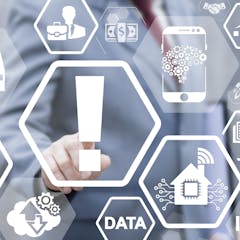
Articles on Risk
Displaying 1 - 20 of 234 articles

Florida home insurance premiums have shot up threefold in just five years.

The Settlers of Catan codified a certain kind of game play based on the history of settler colonialism.

Exchange-traded funds allow you to spread your risk across many different regions and markets (such as shares, bonds, property and companies). You aren’t putting all your eggs in one basket.

Global warming plus leverage equals a big mess for companies.

One barrier to climate action has been our own psychology and reluctance to take action. But as the crisis intensifies, some of these barriers have evaporated.

It’s a difference which can have a big impact on careers and earnings.

Our research shows outdoor parks offer the ideal place for children to engage in risky play. This may challenge parents who understandably wish to keep their kids ‘safe’ all the time.

Nearly 22 million people lived within 3 miles of a US wildfire in the past two decades. A new study tracking their locations flips the script on who is at risk.

Being beautiful can improve a person’s quality of life and emotional wellbeing. But sometimes, there is a risk of harm — from exposure to cancer-causing UV light, to cheap cosmetic procedures.

It’s not a question of if insurance will become unavailable or unaffordable in areas at high risk of wildfires, hurricanes and other damage – it’s a question of when. A disaster risk expert explains.

Making sure you have enough set aside for a long retirement has become more difficult over the past 25 years.

Emergency management plans need to address the growing risks emerging from increasing applications of artificial intelligence.

It’s not entirely accurate to say that you’re more likely to die in a car accident than in a plane crash. Chances are, you’re not the average person.

If you feel safer, you might take more risks – canceling out the benefits of various safety interventions. But educating people about this paradox and allowing for some personal choice might help.

The new COVID management plan relies on each of us assessing our own risk of COVID.

Health guidelines can feel contradictory and hard to interpret. But a new star rating system should help consumers and policymakers better parse the evidence behind health risks and outcomes.

As businesses establish themselves in the metaverse, the amount of financial transactions there will increase. This will come with previously unknown risks.

A series of studies found that exposure to dogs leads people to make riskier financial decisions, while interactions with cats have the opposite effect.

We calculated there was a one in 1.4 billion chance of someone contracting vCJD from a blood transfusion. And that risk will get even smaller with time.

People want a simple answer. Is this action safe? But despite Anthony Fauci bouncing responsibility for COVID-19 risk assessment to individuals, your risk can’t be boiled down to one probability.
